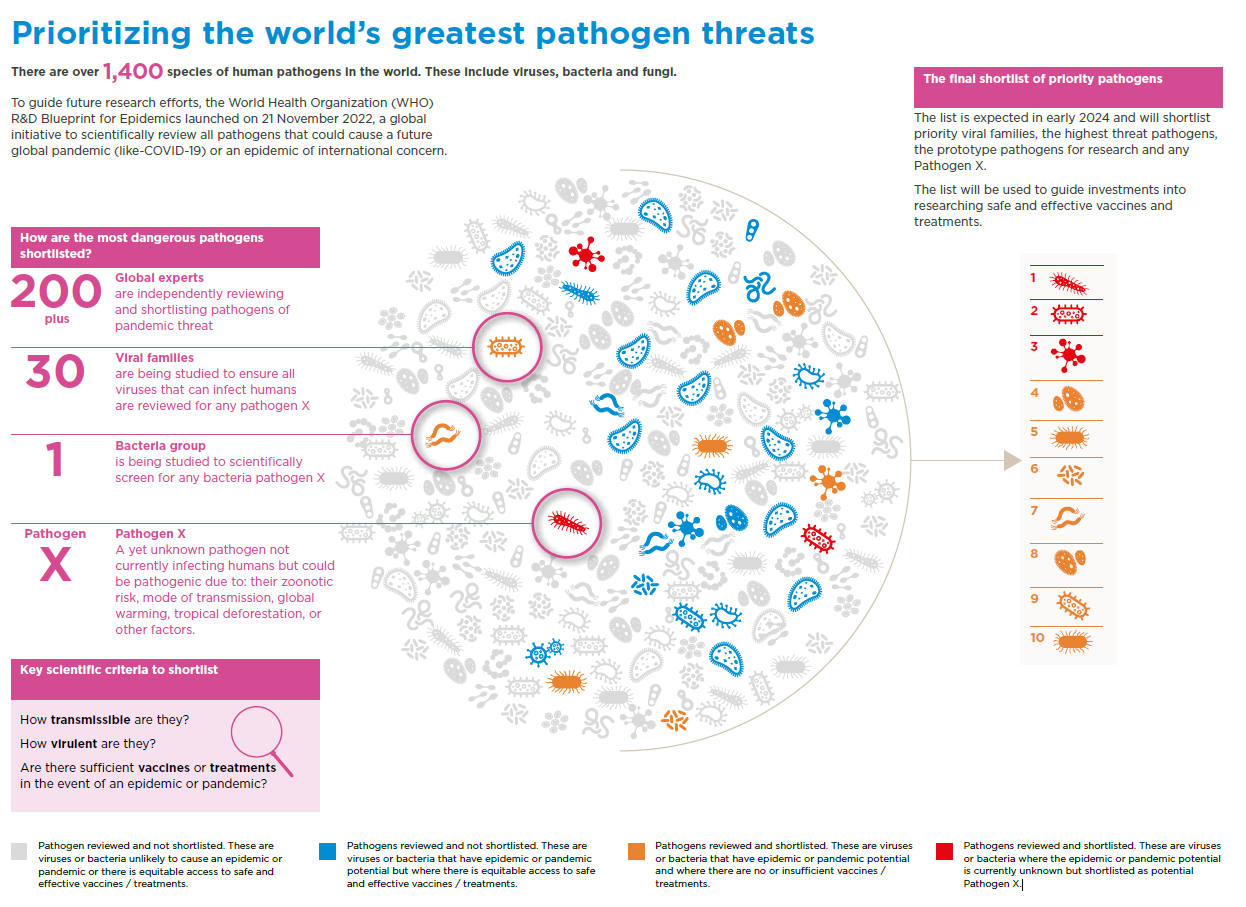
WHO R&D Blueprint for Epidemics
A lady lab technician is performing research and technology work in karachi, Pakistan.
Targeting research on diseases of greatest epidemic and pandemic threat
Prioritizing
viruses of greatest epidemic and pandemic threat to accelerate R&D
on safe and effective medical countermeasures.
The WHO list of priority pathogens of epidemic and pandemic threat is
expected to be publicly release in the first half of 2024.
To strategically channel collaborative research efforts with the worldwide scientific community, the World Health Organization (WHO) regularly issues an official list spotlighting pathogens with the highest epidemic and pandemic potential. This list specifically targets pathogens lacking safe and effective medical countermeasures
In a announcement
in November 2022, the WHO signaled its intention to update this list,
drawing valuable insights from the challenges posed by the COVID-19
pandemic. The renewed methodology employs a viral family-centric
approach, pinpointing representative viruses within a family as
pathfinder viruses. This focused strategy aims to more rapidly develop
vaccines and treatments and in doing so, addresses knowledge gaps
applicable to other threatening viruses within the same family.
Recent years have witnessed a growing endorsement of this approach, lauded for its ability to expedite research and encourage comprehensive studies on entire virus classes, such as the Filovirus family. This departure from individual strain focus enhances our capacity to respond to unforeseen strains, zoonotic viruses, and the potential emergence of a Pathogen X
To facilitate this initiative, the R&D Blueprint is orchestrating the collaboration of over 25 group of experts specializing in various viral families. Additionally, a dedicated bacterial group is being incorporated to assess the risks associated with naturally occurring bacterial threats. These groups collectively constitute a knowledge pool comprising over 200 international and independent experts.
Anticipated for public release in the first half of 2024, the WHO's updated list of priority pathogens, posing epidemic and pandemic threats, is poised to play a pivotal role in fortifying global health security.

Background documents
Documents will soon be available
